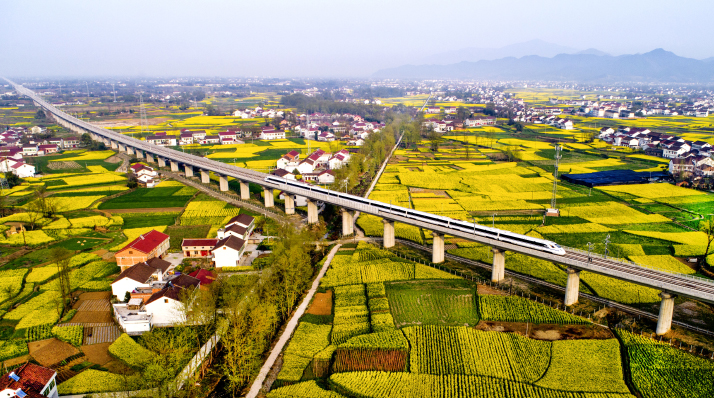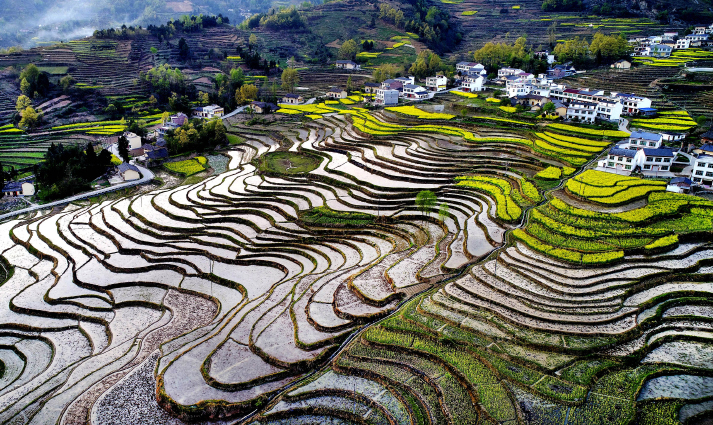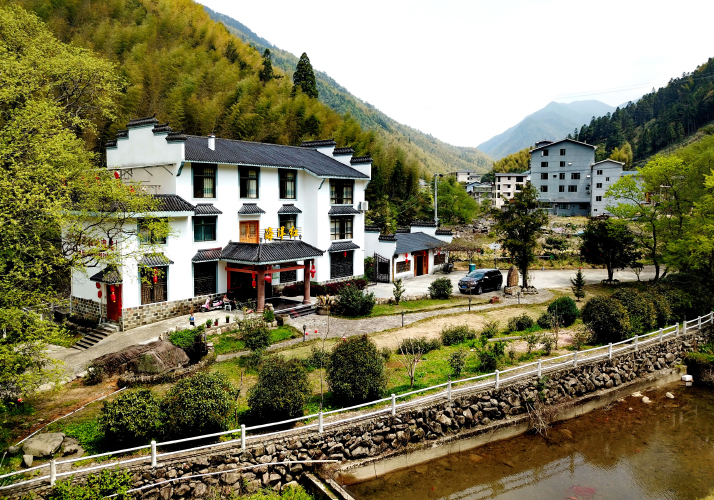|
||||||||||
| Home Nation World Business Opinion Lifestyle ChinAfrica Multimedia Columnists Documents Special Reports |
|
||||||||||
| Home Nation World Business Opinion Lifestyle ChinAfrica Multimedia Columnists Documents Special Reports |
| Current Cover Story |
| Value-Added Rural Vision |
| New era for China's countryside aims to empower farmers, diversify agriculture and promote a green lifestyle |
| By Hou Weili | VOL.10 May 2018 ·2018-04-28 |

China is translating its vision of rural prosperity into reality
Wen Tiejun, 67, sees himself as a typical middle class man. Five years ago, very much a wealthy urbanite, he made a decision which shocked those around him by selling the family's multi-million-yuan property in downtown Beijing and relocating to a village in southeast China's Fujian Province.
"There is no pollution [here], only fresh air, clean water and safe food. This is [a better] life," he told ChinAfrica.
That idyllic lifestyle was something Wen, an agricultural economics expert, found in abundance as a delegate to the Boao Forum for Asia (BFA) Annual Conference 2018 on Hainan Island, especially the clean air, top-level infrastructure and public services.
Wen's decision to move to the countryside was mainly prompted by his growing love for rural life due to his career as an agricultural economist. In order to get closer to rural areas for his academic research, he quit his job in 2013 as head of the School of Agricultural Economics and Rural Development with the prestigious Renmin University of China in Beijing, and joined the lesser known provincial Fujian Agriculture and Forestry University. His reasons for the change were twofold. While seeking a better lifestyle, Wen wanted to achieve concrete results in his research on promoting rural revitalization, which aims to make agriculture a lucrative industry, to turn farming into an attractive profession and transform rural areas into beautiful places to live in.
The Central Rural Work Conference at the end of last year made a major strategic shift from a focus on urbanization over the past decades to achieving rural revitalization in the 21st century. "This is extremely important as it truly places agriculture and rural development as China's priorities," Wen said at the session on Marginalized Rural Asia during the BFA Annual Conference held from April 8 to 11.
Rural prosperity vital

Efficient use of farmland is part of rural reform
The 19th National Congress of the Communist Party of China held in October 2017 highlighted rural issues and proposed the strategy of rural revitalization. A timetable and roadmap to translate the vision into reality were released two months later in the Central Rural Work Conference. "Revitalizing rural areas is a strategy China has made to adapt to new situations in its vast countryside," said Han Changfu, Minister of Agriculture and Rural Affairs, at the conference.
Rural areas and agriculture have entered a new era. Statistics by the Ministry of Agriculture and Rural Affairs show that China's annual grain output exceeds 600 million tons for the past five consecutive years. The annual per-capita disposable income in rural areas reached 13,432 yuan ($2,139). The contribution rate of technological advances in agriculture surpasses 66 percent, showing China's agriculture is shifting from being resource driven to technology driven. In addition, public services and infrastructure in rural areas are also improving.
However, the challenges of inadequate development in rural areas and urban-rural imbalances are significant. "Most notably, the
quality of agriculture needs to be improved; the momentum to increase farmers' income is weak; and the income disparity between urban and rural areas is still large," said Han.
Rapid urbanization over the past few decades has seen the Chinese countryside lose its productive working-age residents and become desolated in some areas. The latest data by the National Bureau of Statistics showed that China's migrant workers totaled 169 million in 2016, nearly 30 percent of the total rural population.
Han said to promote the development of rural areas and agriculture in tandem with urban progress, the life of farmers needs to be improved. "China cannot be a strong country if there is desolation in rural areas," he said.
For Wen, the rural population and market hold great potential for the future of a prosperous China. "Agriculture is the foundation of the nation. It is the reason why China has withstood one crisis after another, like the global financial crisis in 2008 and the devastating SARS epidemic in 2003," said Wen.
Despite being imperative, it is no easy task to translate the vision of rural prosperity into reality. However, in rural matters, Wen is a problem solver. His solution is to introduce the concept of a "sixth industry" for farmers to increase their incomes from the businesses related to agricultural production in addition to their agricultural income, by cooperating with commercial and industrial sectors to integrate production, processing and marketing, and to combine agriculture with tourism and other service industries in rural areas. The concept was first created in Japan.
"Instead of treating agriculture as a single industry, the 'sixth industry' approach makes farmers gain wider added value and enables the sustainable development of agriculture and rural areas," Wen explained. He has adapted the concept so that it meets China's local conditions.
"I like to call it a synthesis of recycling agriculture, innovative agriculture and immersive agriculture," Wen said. According to his explanation, recycling agriculture means changing the way the sector develops, which currently focuses on dependence on the land and use of chemical fertilizers. Innovative agriculture means finding the cultural connotations in agriculture and using that to attract urban residents, young entrepreneurs and investors. Immersive agriculture aims to help farmers earn money from urban dwellers who want to experience agricultural and rural activities. "Fresh air, clean water and a beautiful landscape in rural areas are big assets, but were ignored in the past. Now, with urban residents demanding a green and idyllic lifestyle, these assets could be materialized," he said.
To make the synthesis work, Wen believes China's affluent middle class is vital. "They have the demands to consume such services and possess the necessary capital and expertise in management and sales," he explained. According to the Global Wealth Databook 2016 released by the Switzerland-based Credit Suisse Research Institute, China has the largest middle class in absolute number, totaling 109 million.
Empowering farmers

Modern rural housing
However, despite the important role the middle class can play in future rural and agricultural development, this does not mean that farmers will be marginalized. The plan is to empower farmers so that they can reap the added value accrued by them.
To this end, they need expertise and insurance. The good news is that businesses are keen to get involved. Among them is the New Hope Group, a leading private agricultural enterprise from southwest China's Sichuan Province. "My company will provide financial support to train 100,000 farmers in the next five years," Liu Yonghao, Chairman of New Hope, announced at the BFA, adding that the company will also invest 50 billion yuan ($7.96 billion) to support other projects under the rural revitalization strategy over this period.
In addition, "insurance will help rural businesses weather natural or market losses through risk control," said Miao Jianmin, President of the People's Insurance Company (Group) of China Ltd. The company is also participating in the establishment of a social security network in rural areas so that low-income rural residents will be able to avoid suffering impoverishment brought about by market uncertainties and natural disasters.
To support startups by rural households and migrant workers in the agriculture-related sector, the company has tailored microfinance services by combining insurance and financing. "For example, startups can use their insurance policies as collateral for acquiring loans," said Miao.
These support services have borne fruit. According to the Ministry of Agriculture and Rural Affairs, as of 2017, there had been 7 million migrant workers and university graduates who had returned to their hometowns and started agriculture-related businesses. The number is on the rise, something that is sure to motivate Wen in his ongoing quest.
(Reporting from Boao, Hainan Province)
40 Years of Rural Reform in China
| About Us | Contact Us | Advertise with Us | Subscribe |
| Copyright Beijing Review All rights reserved 京ICP备08005356号-5 京公网安备110102005860号 |